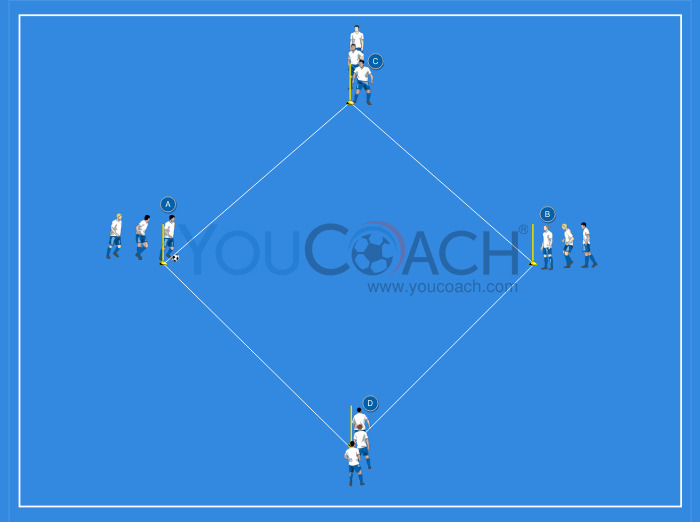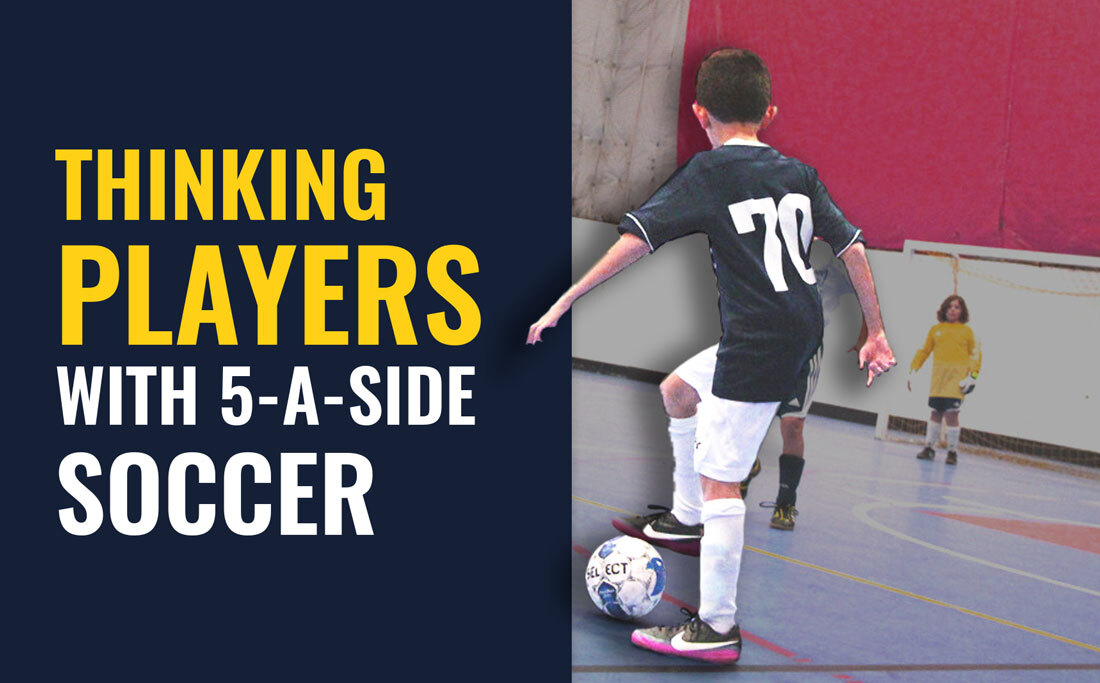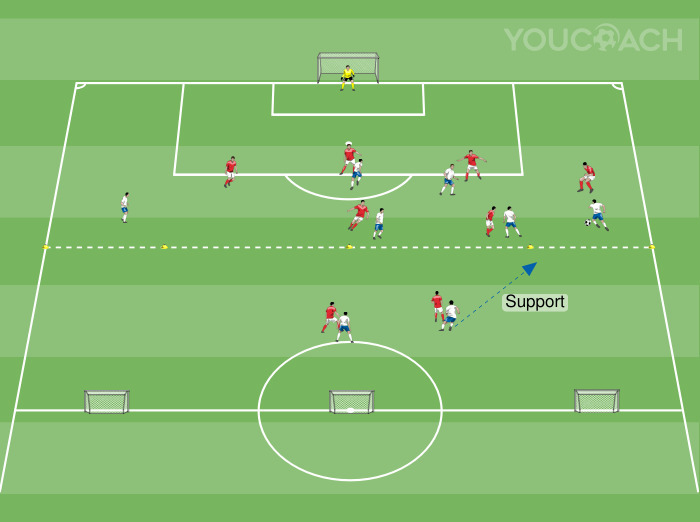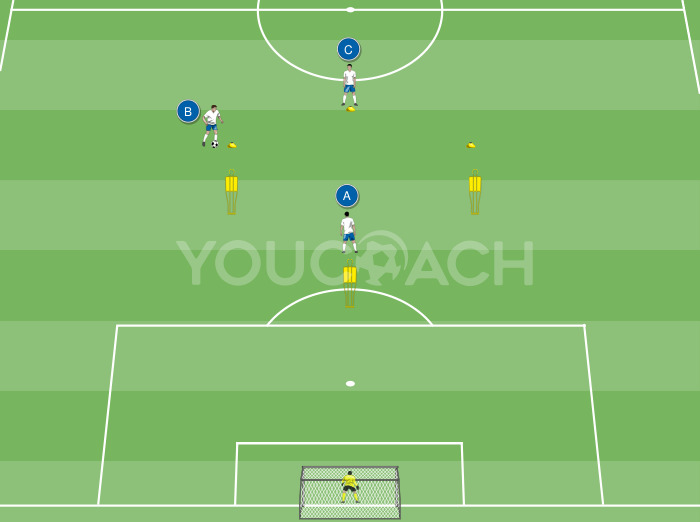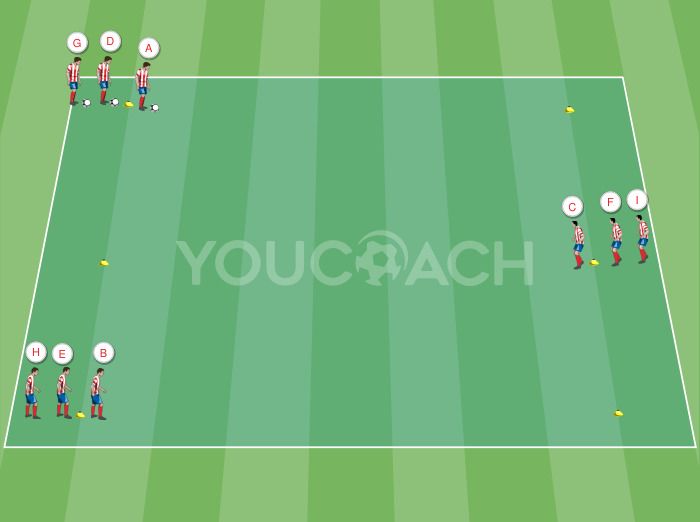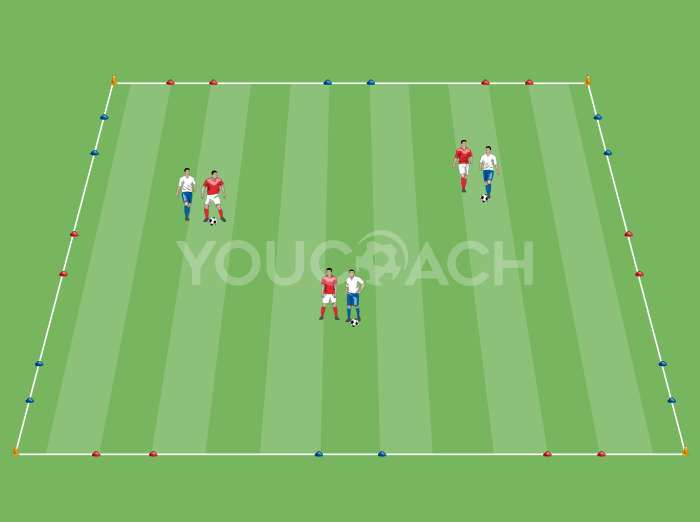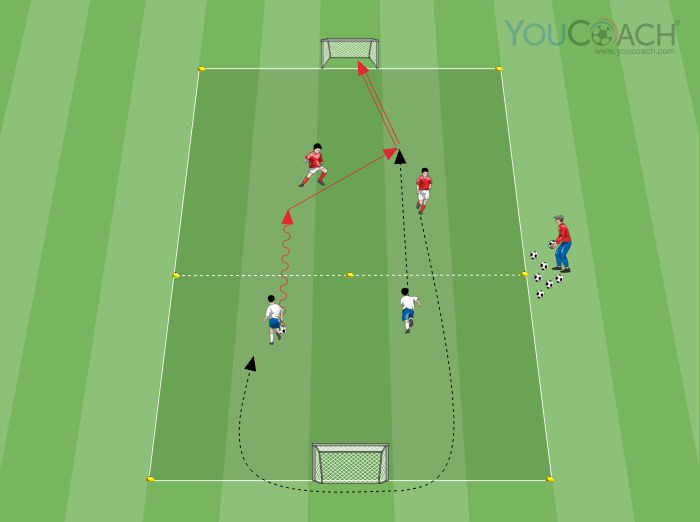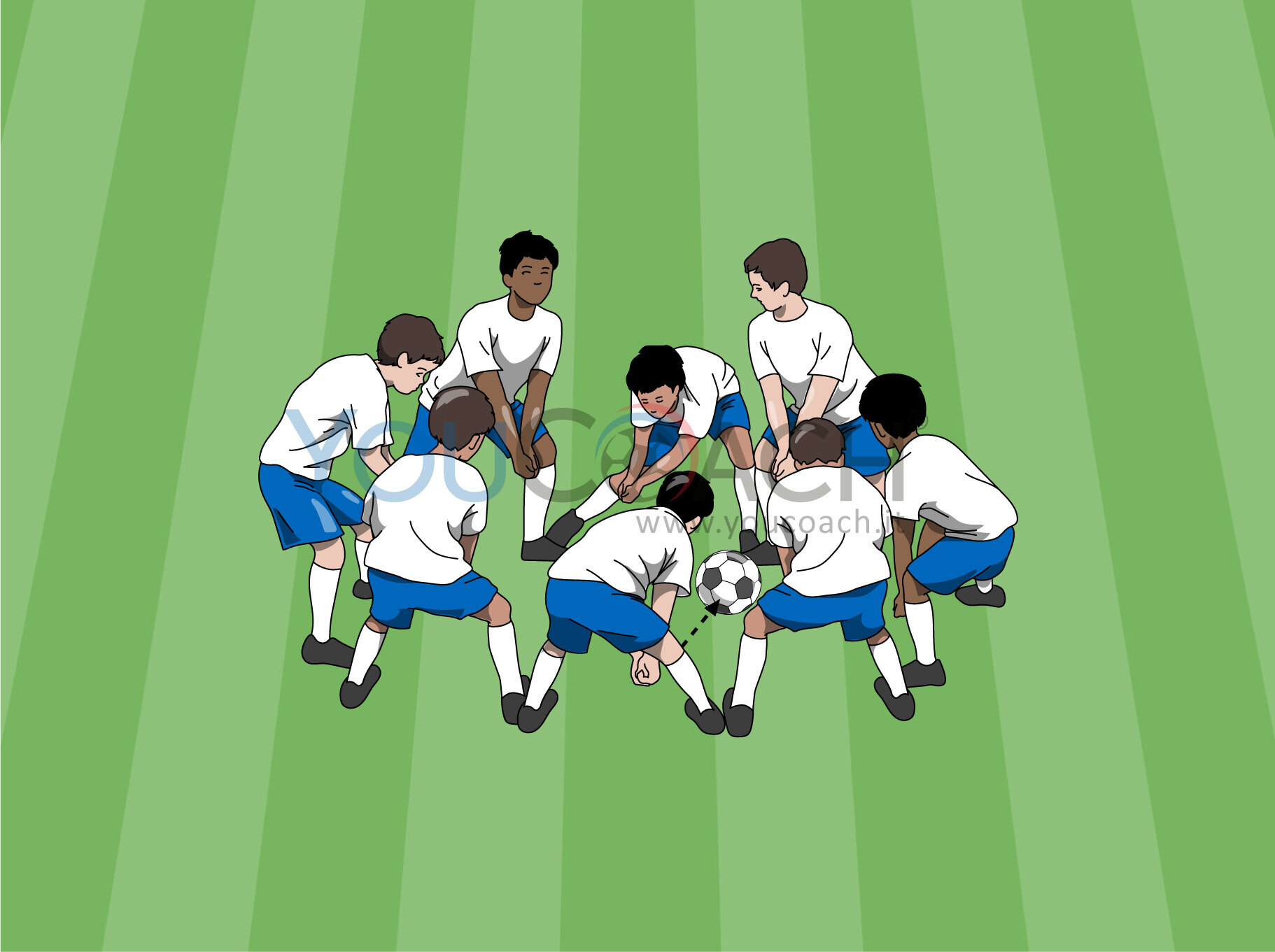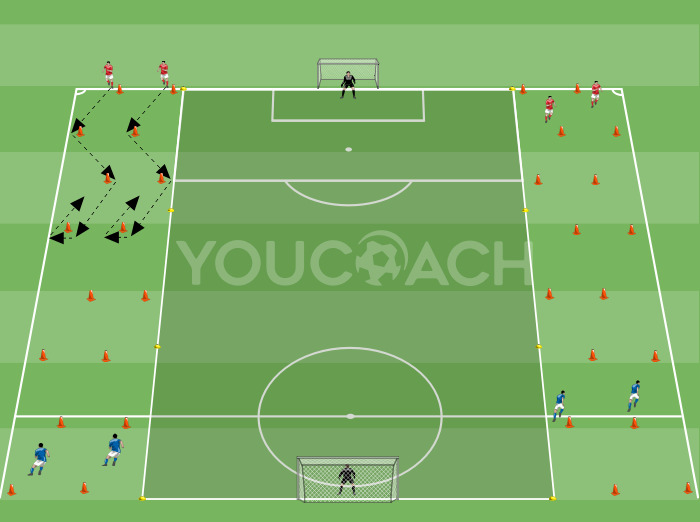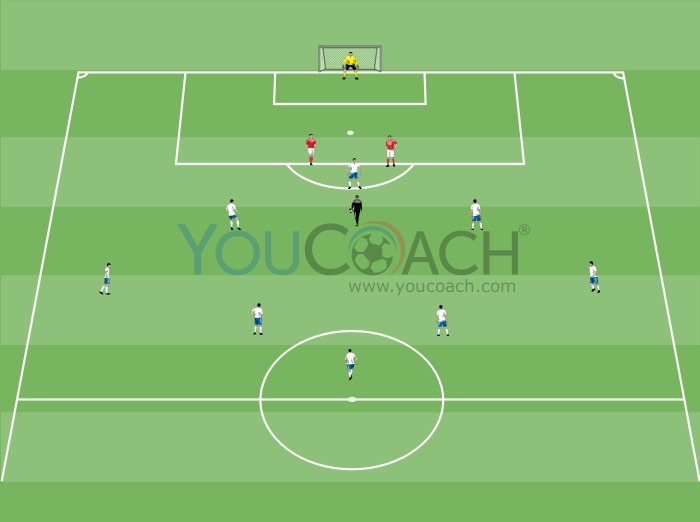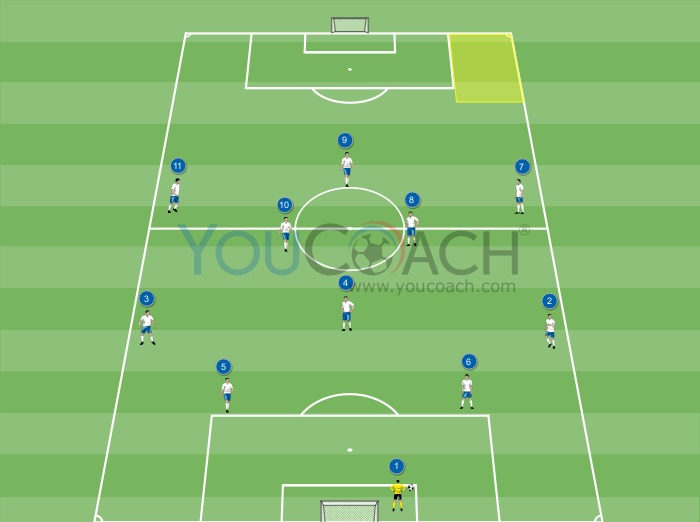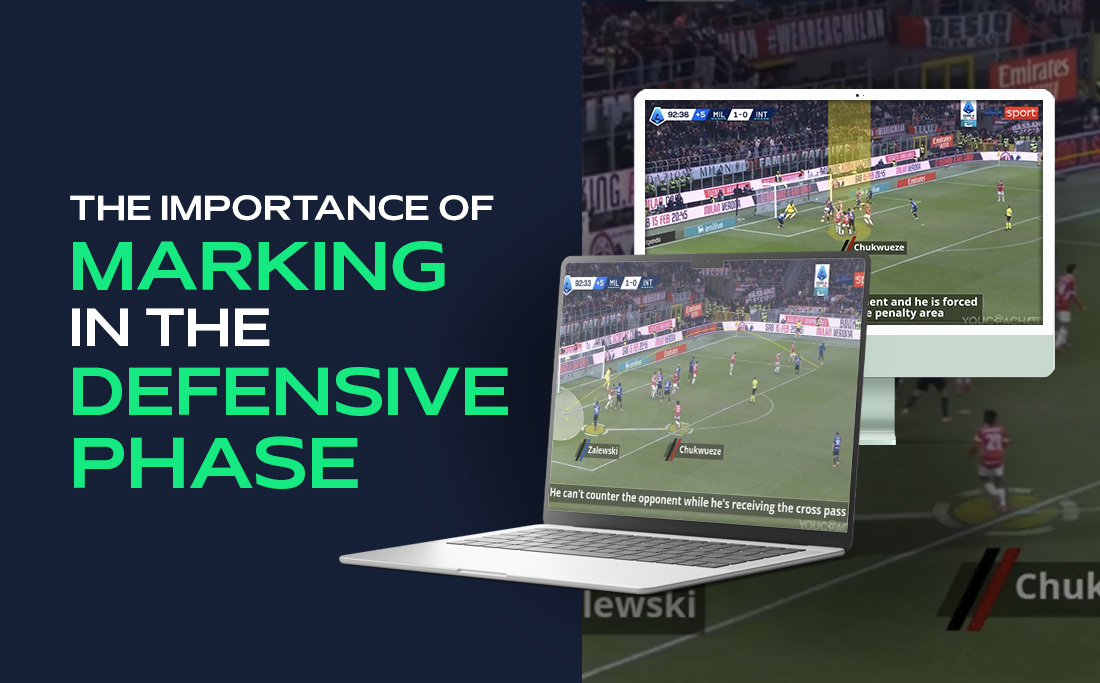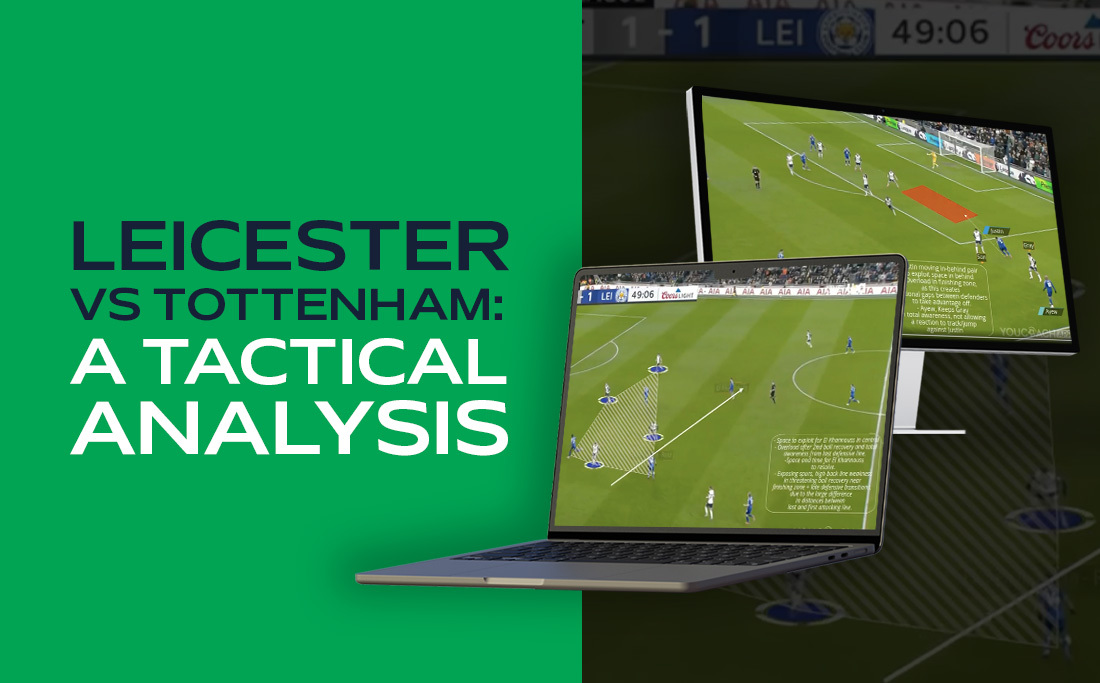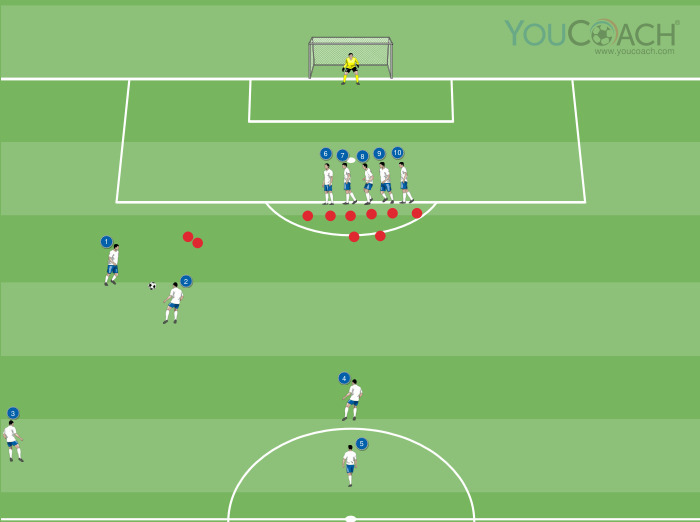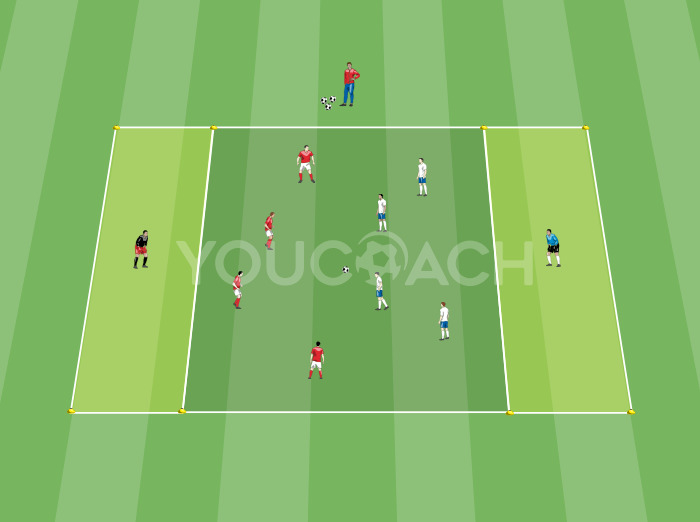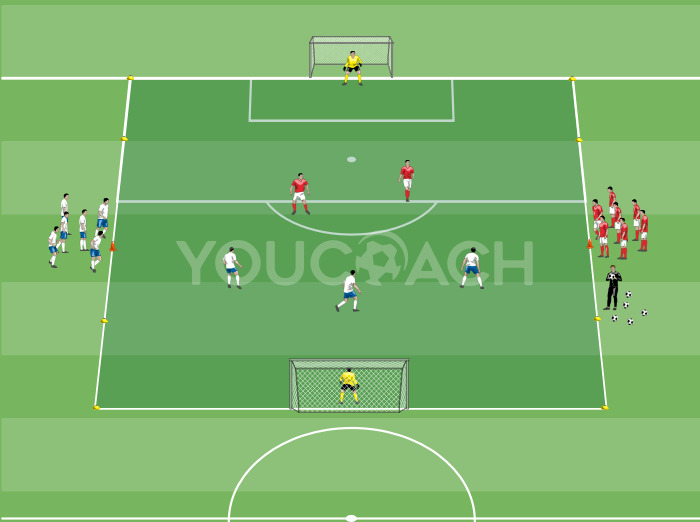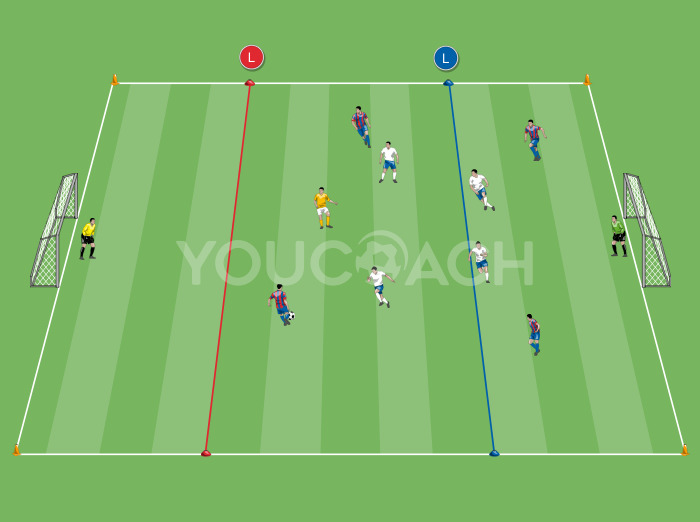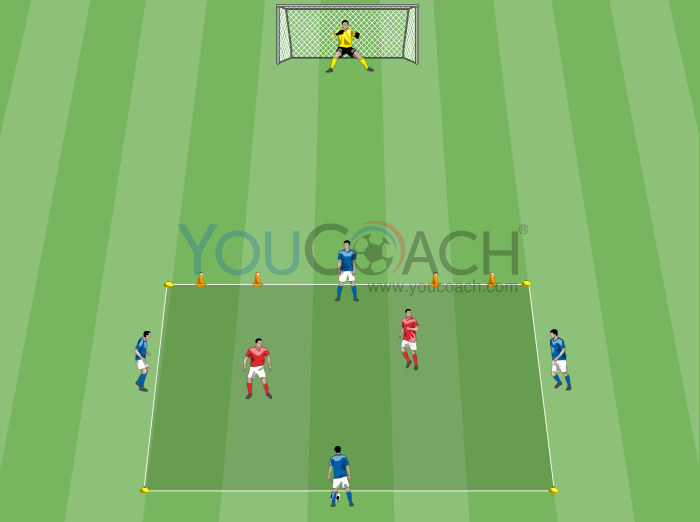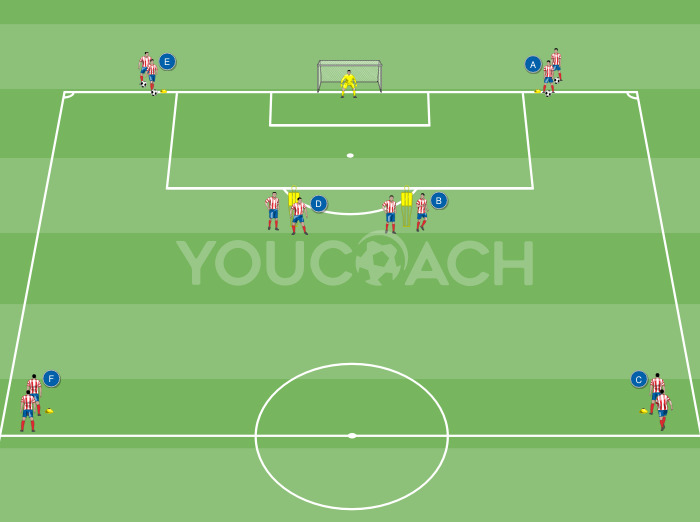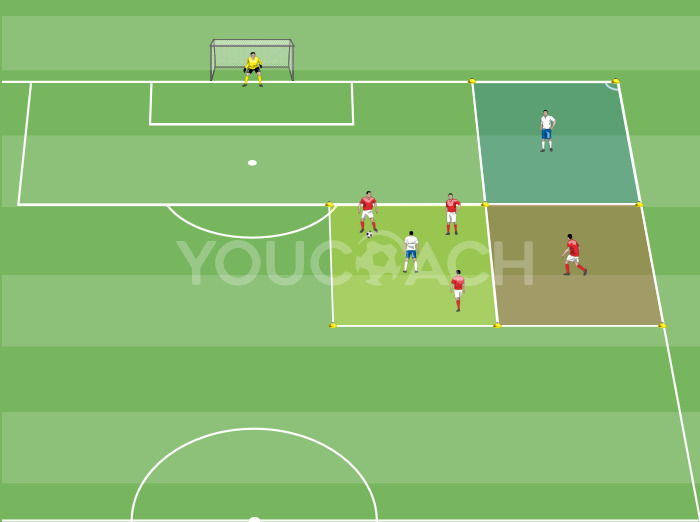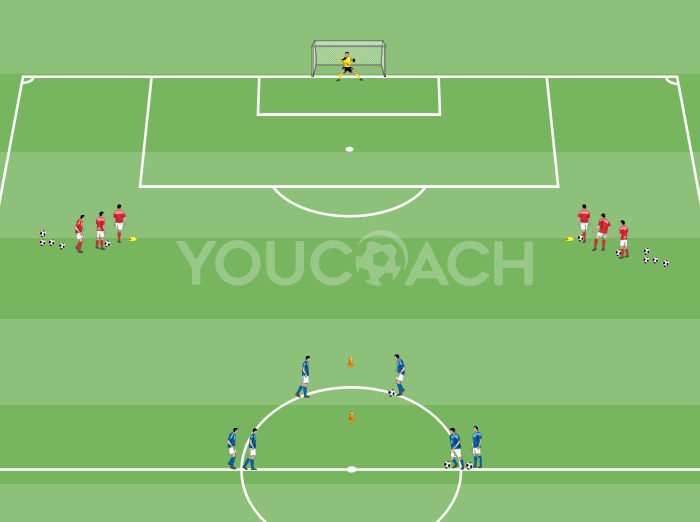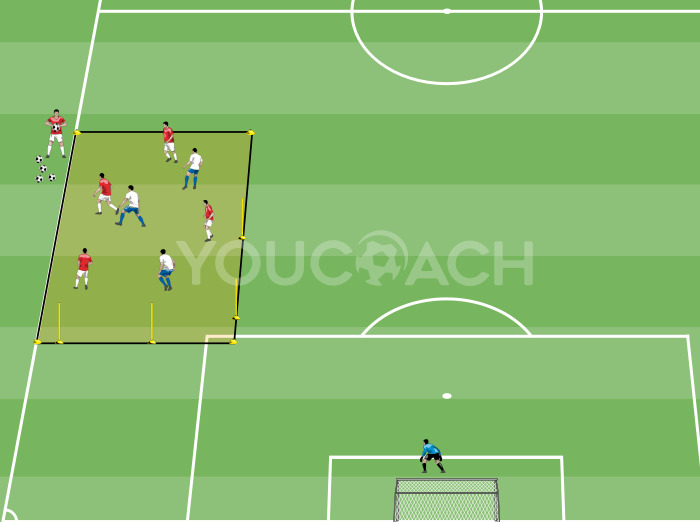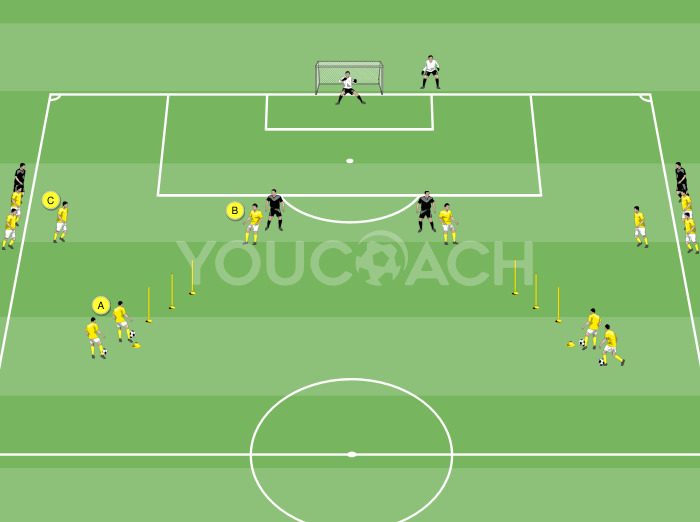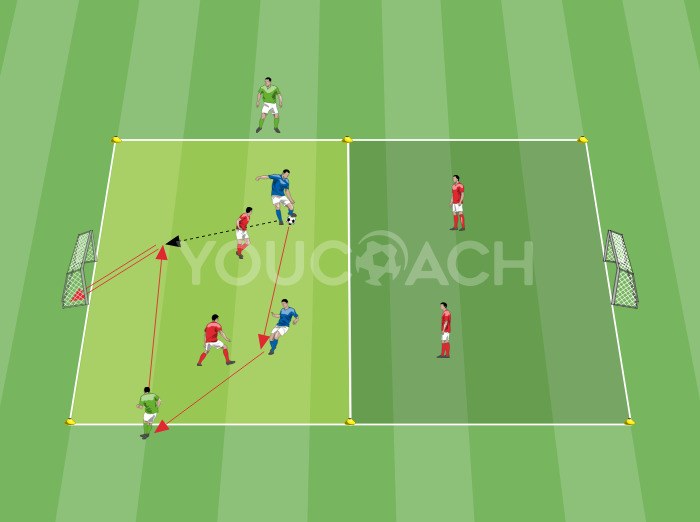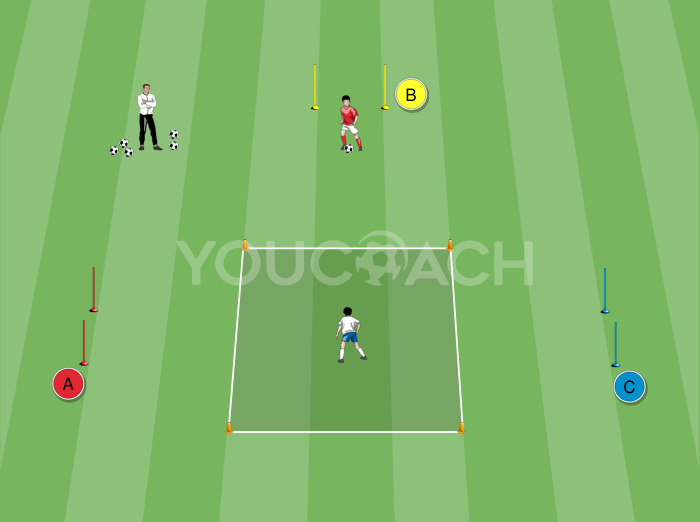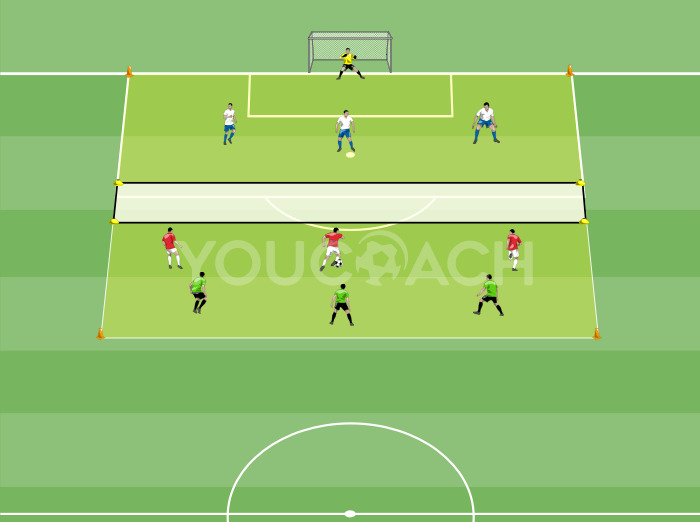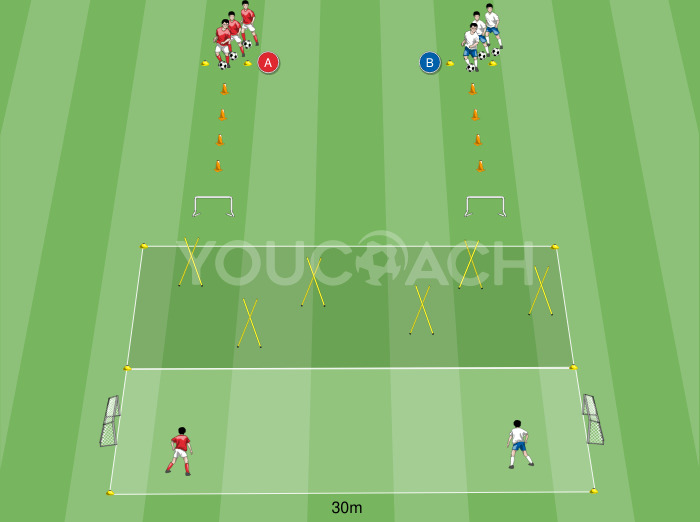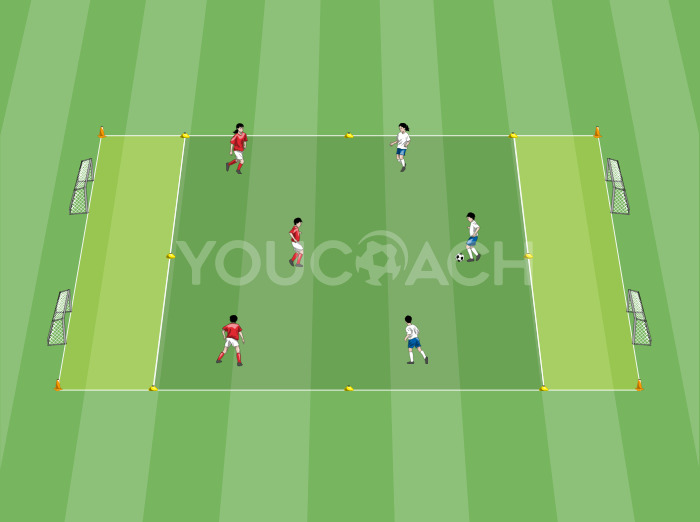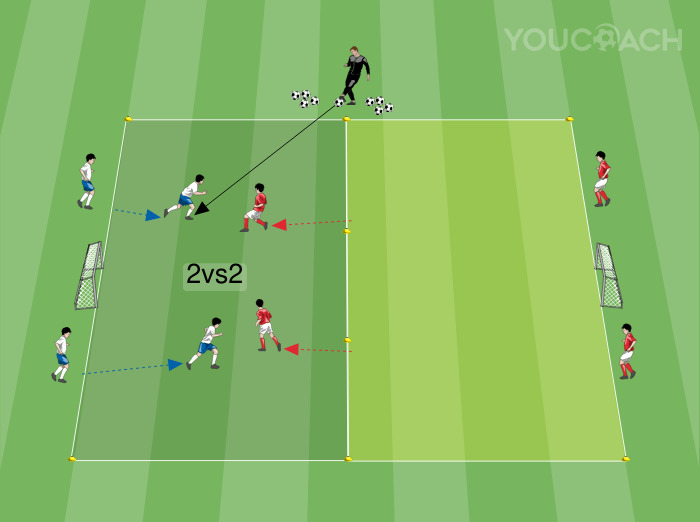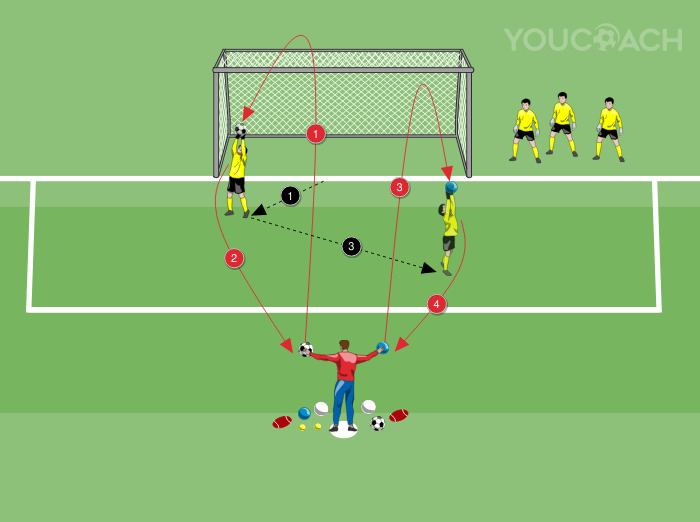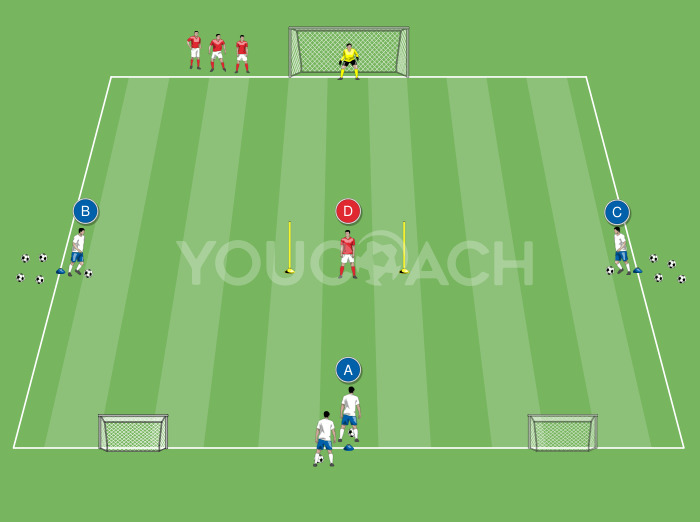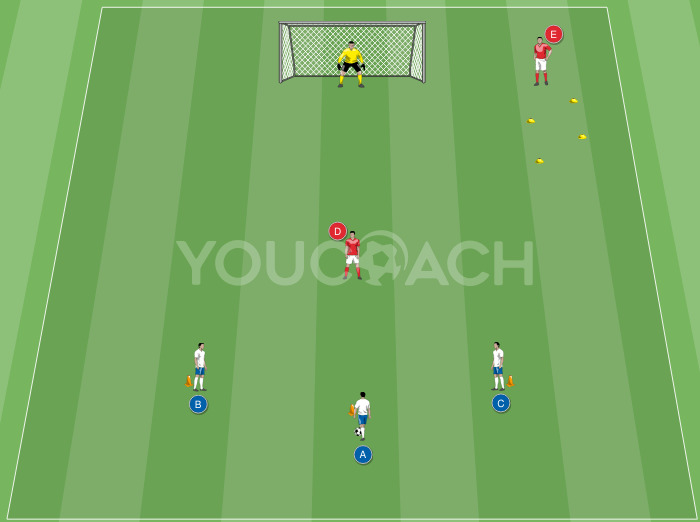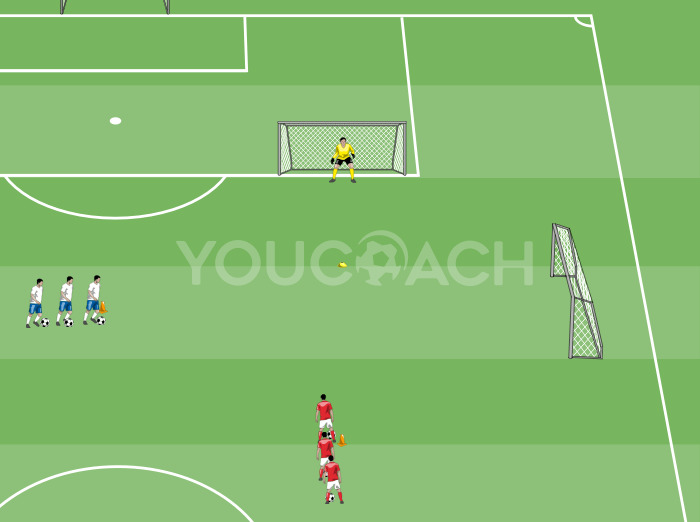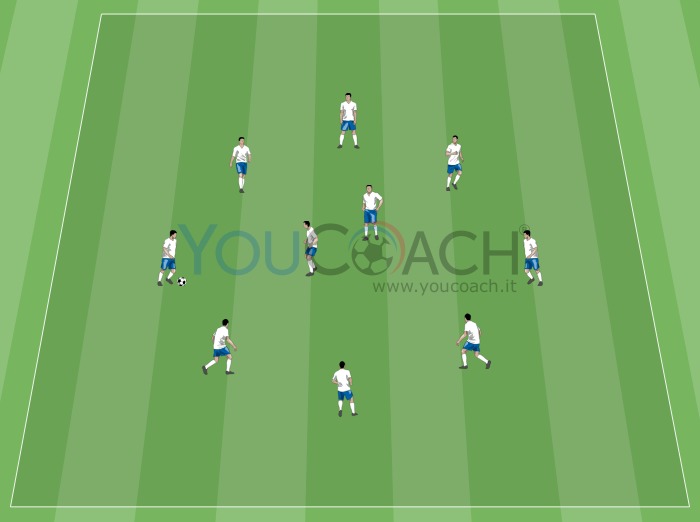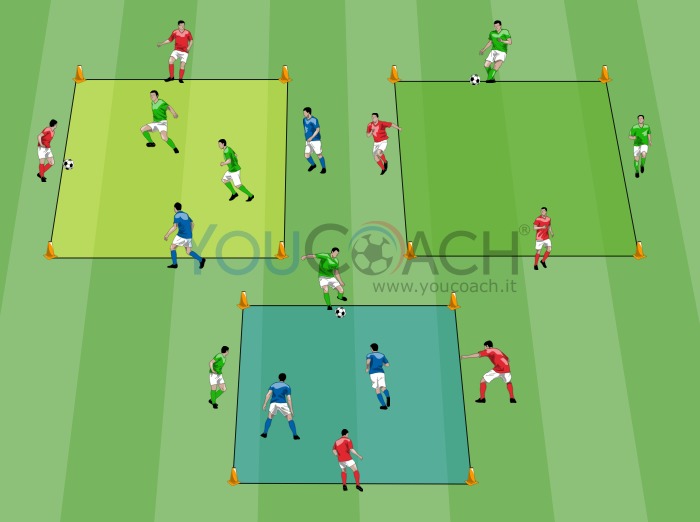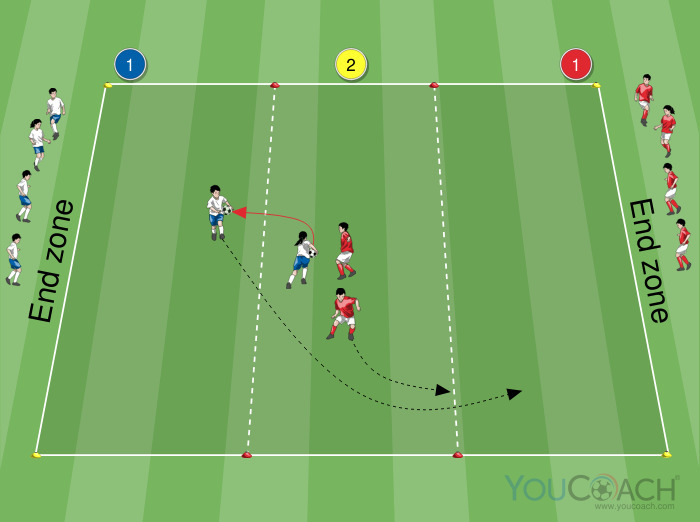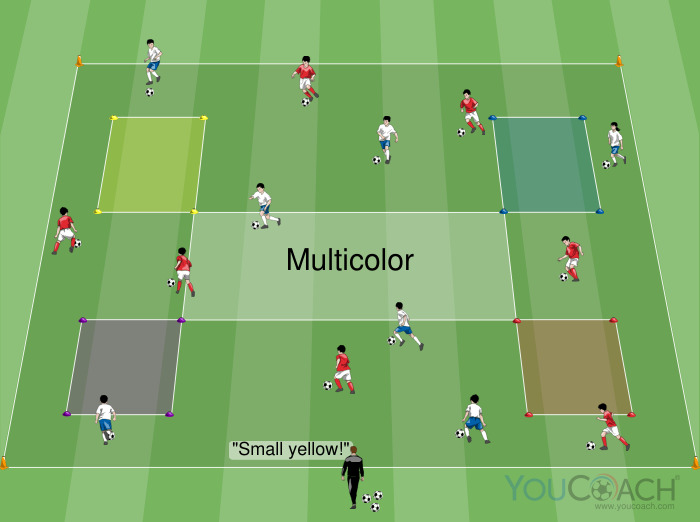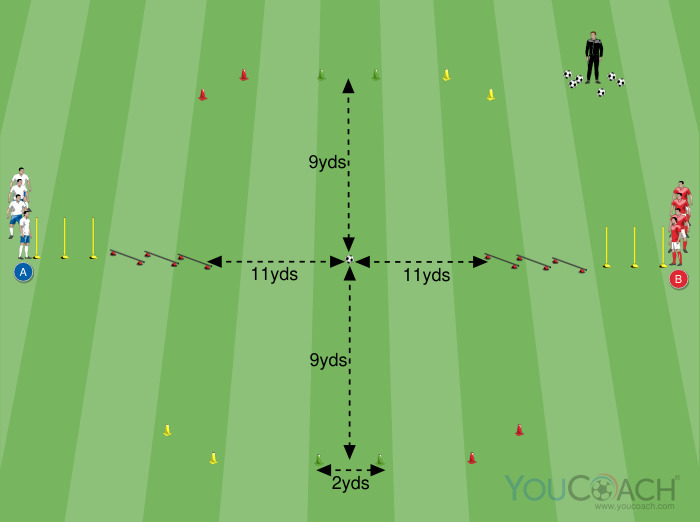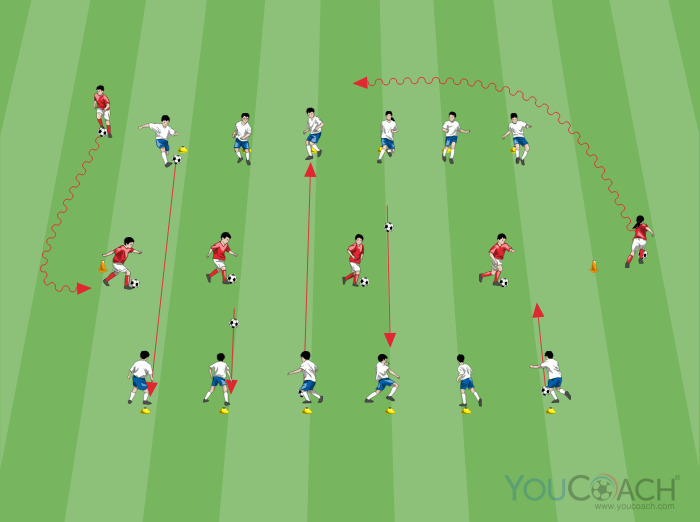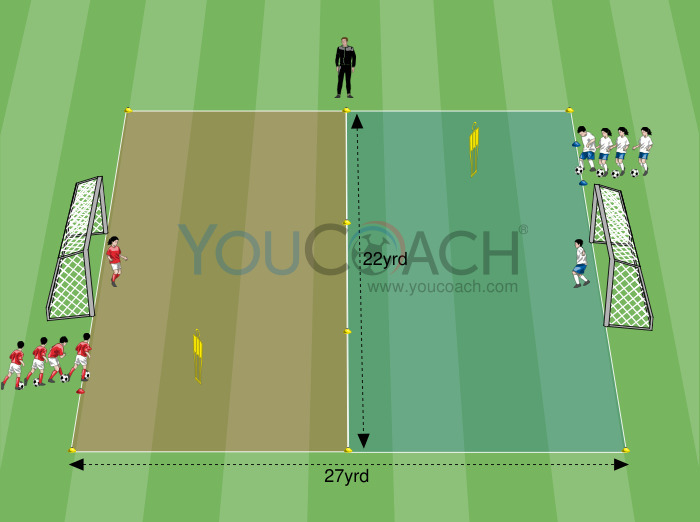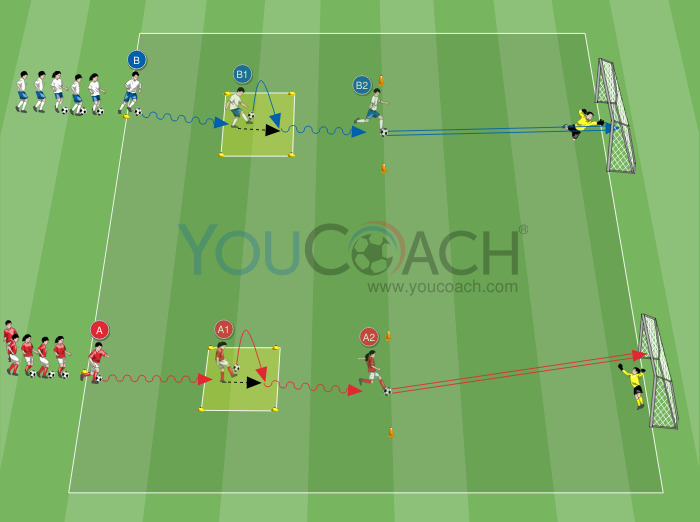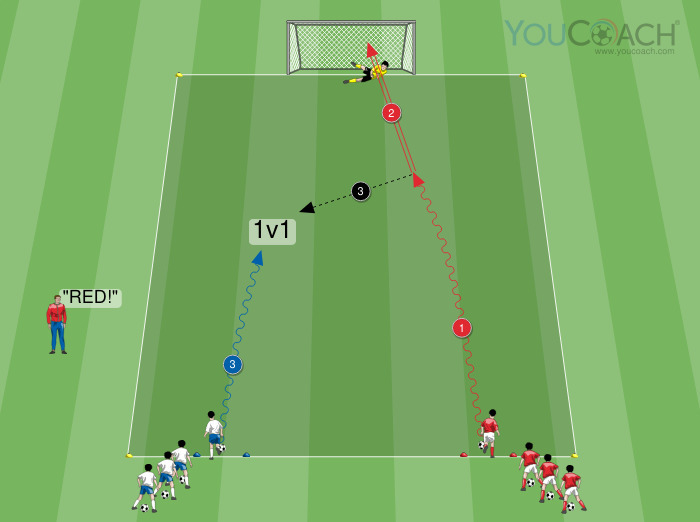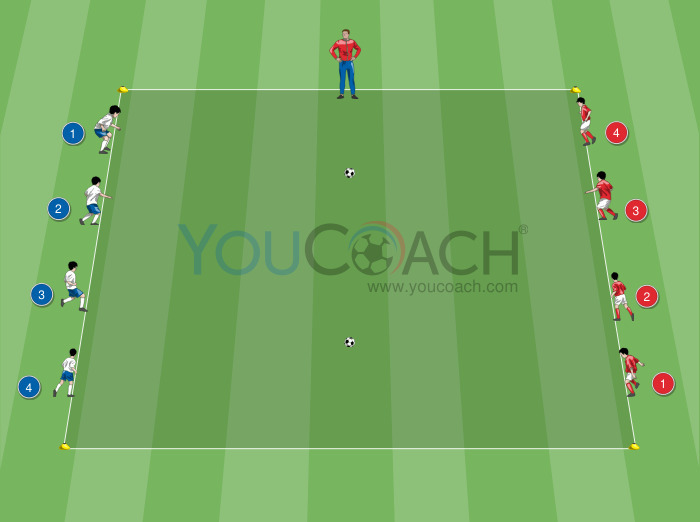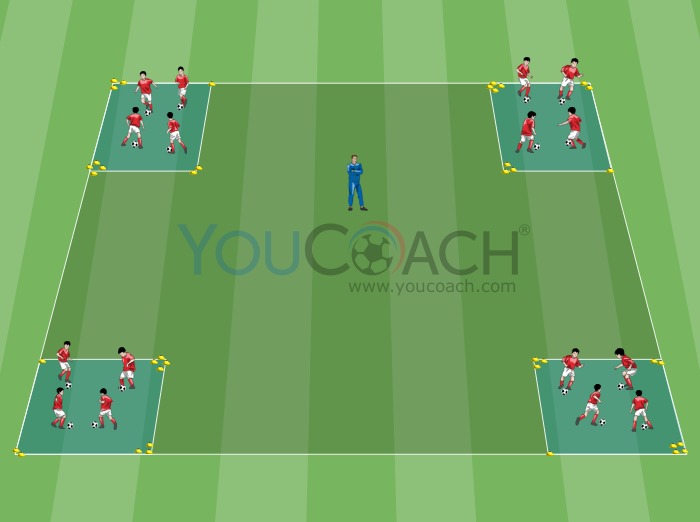Build-up play with numerical superiority and game situations for building

- 12 markers (6 per color)
- 6 vests
- 4 mini-goals
- 1 goal
- Balls
- Playing Area: 60x50 meters / 66x55 yds
- Players: 11 + 1 goalkeeper
- Duration: 20 minutes
- Series: 2 of 8 minutes each with 2 minutes of recovery
| Summary | Secondary Objectives |
|---|---|
|
First build-up in numerical superiority to seek a situation of numerical balance |
Visual perception, Vestibular information, Cognitive, Pass, Oriented control, Losing your marker, Finishing, Pressing, Transitions |
Five meters from the penalty area, create two neutral zones measuring 20×20 meters/22×22 yards, 15 meters/16 yards apart. On the side furthest from the goal in both zones, place two mini-goals, each marked with a colored marker (yellow or blue). On the side closest to the goal in each zone, create two gates with pairs of colored markers (of the opposite color to the goal in front). In the area between the goal and the colored gates, place four white playmakers and three red attackers to play a 5 v 3 situation in favor of those developing the build-up play from the back. Place one red attacker inside each neutral zone. Between the neutral zones, place one white playmaker and one red marking midfielder. Give the ball to the goalkeeper defending the goal.
- Within the first zone, the building players, starting from the goalkeeper, play a situation of numerical superiority, starting with 5 v 3, with the aim of conquering a frontal space by crossing one of the four gates to conquer a neutral zone
- Within the neutral zone, a 2v2 situation is played with the white playmaker and the red direct marker entering the zone together with the white ball carrier and the attacker already in the square
- In the 2v2, the aim is to score in a mini-goal
- If the goal is delayed, the playmakers can restart the action by returning to the goalkeeper and looking for another gate, in order to speed up the goal
- The playmakers have the option of playing the ball directly to the central midfielder, in which case the midfielder can occupy a neutral zone with an oriented control and play 2v2 with a building player who enters the neutral zone
- If the attackers win the ball, they must finish in the goal defended by the goalkeeper
- The exercise is conditioned by the color of the finishing goal, which must be the same color as the gate crossed by the building players while dribbling the ball. If the building team finishes in the goal corresponding to the color of the gate, they score two points; if they finish in the one of the opposite color, they score one point
- In the first zone, a 5 v 3 is played with the aim of conquering a gate while dribbling
- If the central midfielder receives the ball before a building player has conquered a gate, the midfielder himself will decide which neutral zone to enter, and in this case a building player will come to help to create a 2 v 2 situation (the goal is valid in both mini goals and is worth one point)
- The central midfielder can only receive the ball in the space between the neutral zones
- The attacking team always presses for immediate possession
- If the shot is not taken quickly and immediately (within a few seconds), the building team can restart the build-up with a back pass to the goalkeeper in the low zone (penalty area)
- To make the exercise easier, you can play 2 v 1 in neutral areas with the help of the central midfielder and without pressure from the attacking midfielder
- Focus on building in numerical superiority (5 v 3)
- Pay attention to the timing and spacing of passes, especially the occupation of space for dribbling and winning the front space
- Encourage continuous active pressure from the attackers and pay attention to any positive transition through finishing
- Observe the ability to finish immediately, within seconds of the play being created
- Observe the playmaker's ability to lose the marker for oriented control


